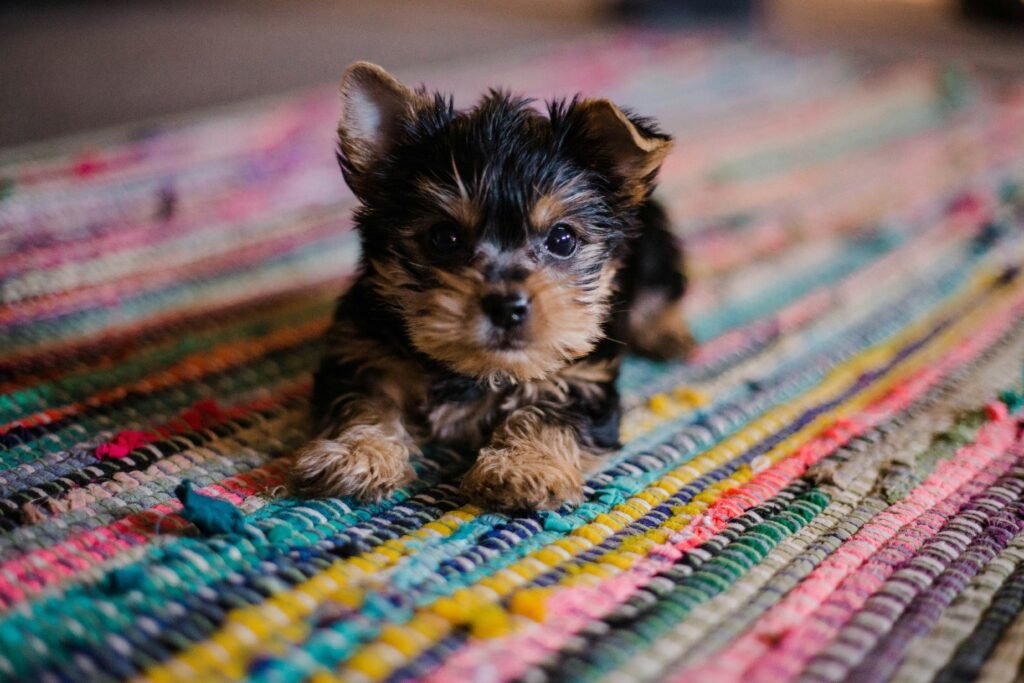Bringing a new puppy home feels like falling in love overnight. One moment, you’re gushing over their floppy ears and clumsy paws—and the next, you’re up at 3 a.m., wondering why your tiny bundle of joy won’t stop crying in their crate.
If this sounds familiar, I want to tell you a little secret: You’re not alone.
The first few days with a new puppy are a rollercoaster of emotions for both of you. You’re figuring out routines, decoding barks, and tiptoeing around nap times like you’ve got a sleeping baby in the house. And your puppy? They’re just trying to make sense of this big, new world without their littermates or mama.
Let’s talk about one of the most common—and heartbreaking—challenges you’ll face right away: crate crying.

Night One: The Howling Begins
You probably spent hours preparing for your puppy’s arrival—buying the perfect crate, choosing soft bedding, and researching chew toys. You placed the crate beside your bed so they wouldn’t feel alone. But the moment you closed that crate door? The whimpering started.
At first, it was a soft whine.
Then it turned into a full-blown sob session.
You lay there, torn between comfort and confusion. Should you open the crate? Let them sleep with you? Wait it out?
Here’s the thing: crying in the crate is absolutely normal. Your puppy has just been separated from their litter, their source of warmth, comfort, and familiarity. Imagine going to sleep one night with your entire family—and waking up alone in a strange room. You’d cry too, wouldn’t you?
So Why Exactly Is Your Puppy Crying?
Understanding the why behind the cries makes all the difference.
- They’re scared: The crate is unfamiliar. It feels like a cage to them, not the haven it will eventually become.
- They miss their littermates. Your pup is used to snuggling up with warm bodies, and sleeping alone feels unnatural.
- They need attention or feel lonely: If they see you moving around or hear voices in another room, they may feel left out and anxious.
- They need to pee (or poop): Puppies have teeny-tiny bladders. A 2-month-old can only hold it for about three hours.
- They’re simply overwhelmed: Everything is new, and your puppy hasn’t yet learned that the crate is a safe space, not a punishment.

The Night I Almost Gave Up
I’ll never forget the third night with my puppy, Luna. Her cries had quieted a bit on night two, but on night three, she seemed inconsolable.
I tried ignoring her (as the training blogs suggested) and whispering reassuring words from across the room, but nothing worked.
Eventually, I tiptoed over and opened the crate. She crawled into my lap, trembling. That’s when it hit me—this wasn’t manipulation. She was truly scared.
What You Can Do to Help (From One Puppy Parent to Another)
You’re probably reading this with one ear open, waiting to hear the next cry. So let me walk you through a few tried-and-tested things you can start doing tonight.
1. Make the crate feel like home
Instead of thinking of it as a cage, consider the crate your puppy’s bedroom. Fill it with:
- A soft, warm bed
- A familiar-smelling blanket (or even one that smells like you)
- A safe chew toy or teething ring
- Puppy-safe calming products (like pheromone sprays or music designed for dogs)
Place the crate somewhere cozy and close to where you sleep—at least for the first few weeks.
2. Use positive reinforcement
Let your puppy explore the crate on their own terms during the day. Toss treats in there. Feed them meals near or inside the crate. Praise them when they walk in. You’re building a connection between the crate and good things.
3. Take it slow
Maybe you’re leaving your pup in the crate longer than they’re ready for. Try shorter crate sessions throughout the day. Sit nearby with a book or your phone while they’re inside, so they don’t feel completely alone.

4. Respond with balance
If the cries are mild and settle after a few minutes, it’s okay to wait it out. But if they escalate or sound panicked, your puppy might be truly distressed. Comforting them doesn’t mean you’re “giving in.” You’re showing them they’re safe—and that’s the foundation of every successful training journey.
5. Don’t forget potty breaks
If your pup is 2 months old, take them out every 2–3 hours. Set an alarm if you need to. It’s exhausting, yes—but temporary.
6. Burn off some energy before bed
Play with them. Let them chase a toy. Tire them out a little. A sleepy puppy is far less likely to whine when the lights go out.

What If It’s Still Not Working?
If your puppy continues to cry and you’re not seeing progress after a few days or weeks, consider reaching out to a certified behaviorist. There’s no shame in asking for help. Some puppies have had traumatic starts. Some are more anxious by nature. And some just need more time.
The Good News? It Gets Better.
Truly, it does.
That same puppy who used to cry every time I stepped away from her crate? She now walks in on her own, curls up, and drifts off like it’s the most natural thing in the world.
Crate training takes time, patience, and a whole lot of empathy. But you’re not just training your puppy—you’re building trust. Every tear wiped, every late-night potty trip, every quiet reassurance? It’s adding up to something big.
A bond that lasts a lifetime.
So hang in there, friend. Your sleepless nights won’t last forever, but your puppy’s love will.


